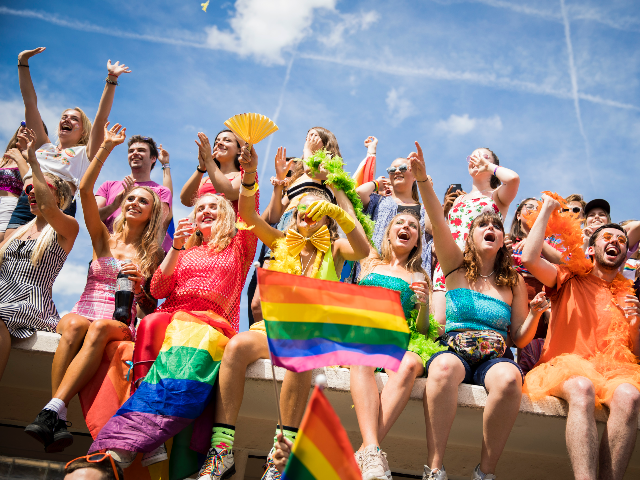The percentage of people between the age of 16 and 24-years old identifying as either lesbian, gay, or bisexual (LGB) in Britain has nearly doubled over a four year period.
According to a survey conducted by the UK’s Office for National Statistics, eight per cent of 16 and 24-year olds identified as a member of the so-called LGB community in 2020, increasing from 6.6 per cent in 2019 and just 4.1 per cent in 2016.
This means that nearly one in 12 young Britons now identify as either gay, lesbian, or bisexual, following “an increasing trend for this age group since 2014,” the ONS said.
The majority of the group identified as bisexual representing 5.3 per cent of the 16-24 population, while 2.7 per cent identified as either gay or lesbian, while 87.3 per cent said that they were heterosexual. The remaining 3.4 per cent claimed to either not know or refused to answer.
When looking at the adult population as a whole, 3.1 per cent of British adults identified as lesbian, gay, or bisexual. This is also an increase over previous years, with 2.7 per cent recorded in 2019 and 1.6 per cent in 2014, the year in which the ONS began recording such figures.
The report, which was compiled as a part of the Annual Population Survey, also found that the number of heterosexual adults has seen a “decreasing trend”, down from 95.3 per cent in 2014 to 93.6 per cent in 2020.
The ONS said that London was the area in which the highest proportion of adults identified as LGB, with 2.9 per cent reporting to be either lesbian or gay and 1.7 per cent bisexual in the demographically diverse British capital. In comparison, the more rural areas of eastern England saw the lowest, with just 2.3 per cent of adults identifying as LGB.
The survey focused solely on sexual preferences and therefore did not include data on the number of people who identify as transgender or non-binary.
However, there has been some evidence to suggest that the number of young people identifying as transgender has also been on the rise.
In March, figures leaked from the Tavistock and Portman Trust’s Gender Identity Development Service (GIDS) in London found that during the coronavirus lockdowns, the number of children seeking gender reassignment procedures increased by twenty per cent.
Commenting on the steep rise Stephanie Davies-Arai of the Transgender Trend campaign group said: “Life stopped really, so adolescents at that stage in their lives, where they’re really searching for their identity, turn online.
“They’re bombarded with messages about being trans and that all of their problems and insecurities and anxieties are because they’re trans.”
While there are currently no firm numbers on the percentage of people who identify as transgender in Britain, the government has estimated that there could be between 200,000 and 500,000 within the country.
Follow Kurt Zindulka on Twitter here @KurtZindulka

COMMENTS
Please let us know if you're having issues with commenting.